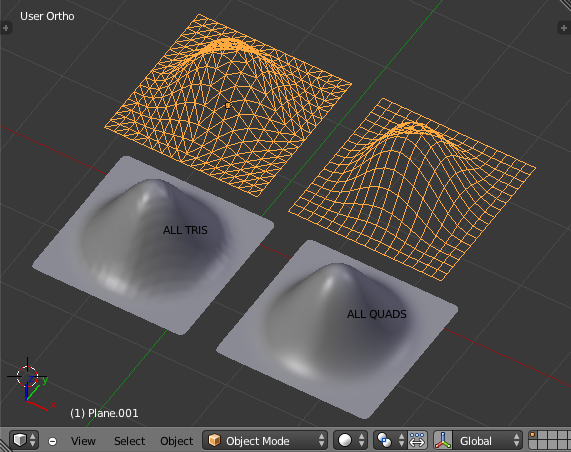When people refer to character animation, they often don't include robots with rigid surfaces where, apart from the modelling process, tris for flat surfaces aren't that bad. They refer to human faces or otherwise flexible surfaces.
To simplify controlling the mesh for facial expressions or lipsync, faces of characters are modeled more or less low poly to control their features and then a Subsurf Modifier is used to create a high degree of smoothness. That's the point where tris cause all the mentioned problems.
Look at this simple example. The tris to the left give some nasty bumps when subsurfed, the quads to the right are wonderfully smooth. Imagine the difference in a character's face.

Since Ideasman has a point, here's another example of topology. To the right you have a very clean structure and the desired smooth result. The left shape is not so lucky. Achieving the same amount of smoothness would require a high amount of tris if it's possible at all.

Regarding modelling: Add a UV Sphere and put an edge ring somewhere at the equator with the Loop Cut. That's fast and easy. Then try to put an edge ring around the single vertex at the top. It's harder to add detail if your topology doesn't follow the form.



